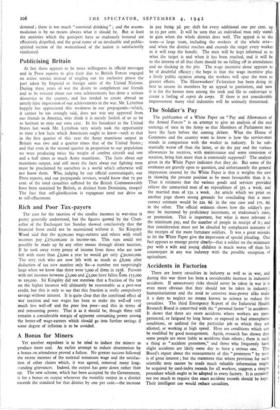The Soldier's Pay
The publication of a White Paper on " Pay and Allowances of the Armed Forces " is an attempt to give an analysis of the real earnings of men in the Army so that Members of Parliament may have the facts before the coming debate. What the House of Commons and the country want to know is how the service-man stands in comparison with the worker in industry. Is he sub- stantially worse off than the latter, or do the pay and the various allowances he receives, with maintenance and some remission of taxation, bring him more than is commonly supposed? The analysis given in the White Paper indicates that they do. But some of the estimates are gravely open to question, and unfortunately the general impression created by the White Paper is that it weights the case in showing the present position to be more favourable than it is. Thus it estimates that the various goods and services provided relieve the unmarried man of an expenditure of 35s. a week, and
the married man of 23s. a week. An article which we print on another page shows strong grounds for concluding that a more
correct estimate would be 22E. 6d. in the one case and 17s. 6d.
in the other. The official estimate shows how the soldier's pay may be increased by proficiency increment, or tradesman's rates, or promotion. This is important, but what is most relevant is the minimum pay, and the number of people in receipt of it ; and that consideration must not be clouded by complacent accounts of the receipts of the more fortunate soldiers. It was a great mistake to let the White Paper give the impression of special pleading. One fact appears to emerge pretty clearly—that a soldier on the minimum pay with a wife and young children is much worse off than his counterpart in any war industry with the possible exception of agriculture.


























 Previous page
Previous page